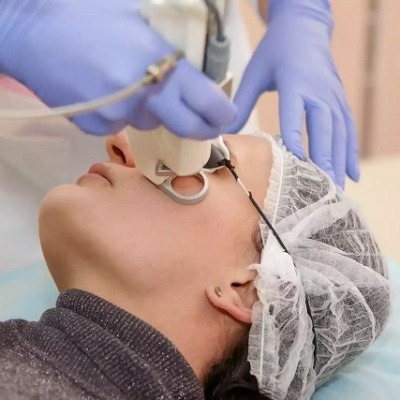Introduction:
Fractional CO2 laser treatment is a popular choice for those seeking to rejuvenate their skin, reduce scars, and improve overall skin texture. However, the benefits and risks associated with this treatment can vary significantly depending on the individual's skin type. Understanding these differences is crucial for achieving the best possible outcomes while minimizing potential complications.
Understanding Skin Types:
The Fitzpatrick Scale:
Dermatologists use the Fitzpatrick scale to classify skin types based on their reaction to UV exposure. The scale ranges from Type I (very fair skin) to Type VI (dark brown to black skin). Each type has unique characteristics that influence its response to laser treatments.
Importance of Skin Type in Laser Treatments:
Different skin types have varying levels of melanin, skin thickness, and sensitivity, which affect how they respond to laser treatments. Recognizing these differences helps in tailoring the treatment to suit individual needs.
How Fractional CO2 Laser Treatment Works:
Mechanism of Action:
Fractional CO2 Laser Treatment in Dubai creates controlled micro-injuries in the skin, stimulating the body’s natural healing process. This promotes collagen production and the growth of new skin cells, leading to smoother, firmer skin.
Expected Benefits:
The primary benefits include:
- Reduction of fine lines and wrinkles
- Improved skin texture and tone
- Diminished appearance of scars
- Treatment of sun damage and pigmentation issues
Benefits and Risks for Different Skin Types:
Type I (Very Fair Skin):
Benefits:
- Significant improvement in skin texture and tone
- Reduced fine lines and sun spots
- Quick healing process
Risks:
- High risk of redness and sensitivity post-treatment
- Requires strict sun protection to avoid damage during healing
Type II (Fair Skin):
Benefits:
- Similar benefits to Type I, including improved skin texture and reduced signs of aging
- Effective treatment for mild to moderate pigmentation issues
Risks:
- Moderate risk of redness and swelling
- Sun protection is essential to prevent post-treatment complications
Type III (Medium Skin):
Benefits:
- Significant reduction in scars and improved skin tone
- Effective for treating moderate pigmentation issues
Risks:
- Potential for temporary hyperpigmentation
- Requires careful monitoring and post-treatment care
Type IV (Olive Skin):
Benefits:
- Excellent results in improving skin texture and reducing scarring
- Noticeable improvement in overall skin tone
Risks:
- Higher risk of hyperpigmentation
- Tailored pre- and post-treatment regimens needed to mitigate risks
Type V (Brown Skin):
Benefits:
- Smoother skin texture and reduced acne scars
- Effective treatment for pigmentation issues with careful monitoring
Risks:
- Significant risk of post-inflammatory hyperpigmentation (PIH)
- Requires customized treatment settings and diligent aftercare
Type VI (Dark Brown to Black Skin):
Benefits:
- Improvement in skin texture and scar reduction with a cautious approach
- Can achieve good results with experienced professionals
Risks:
- Highest risk of hyperpigmentation and scarring
- Treatment should be performed with the lowest effective settings and strict post-treatment protocols
Personalized Treatment Plans:
Customized Laser Settings:
Dermatologists must adjust the laser’s intensity, duration, and frequency based on the patient's skin type to maximize benefits and minimize risks.
Pre-Treatment Consultation:
A thorough pre-treatment consultation is essential to assess the patient’s skin type, medical history, and treatment goals. This helps in setting realistic expectations and planning an effective treatment strategy.
Post-Treatment Care:
Proper aftercare is crucial for all skin types. This includes avoiding sun exposure, using recommended skincare products, and following the dermatologist's advice to promote healing and prevent complications.
Expert Opinions and Recommendations:
Dermatologist Insights:
Dermatologists emphasize the importance of personalized treatment plans. They recommend seeking experienced professionals who understand the nuances of treating different skin types with Fractional CO2 lasers.
Patient Testimonials:
Hearing from patients who have undergone the treatment can provide valuable insights. Many report high satisfaction with their results when the treatment is customized to their skin type.
Conclusion:
Fractional CO2 laser treatment can offer transformative results across various skin types, but it requires a nuanced approach. By understanding the unique characteristics of each skin type and tailoring the treatment accordingly, dermatologists can achieve safe and effective outcomes for their patients. Proper consultation, customized settings, and diligent post-treatment care are essential to ensuring the best possible results.





Comments